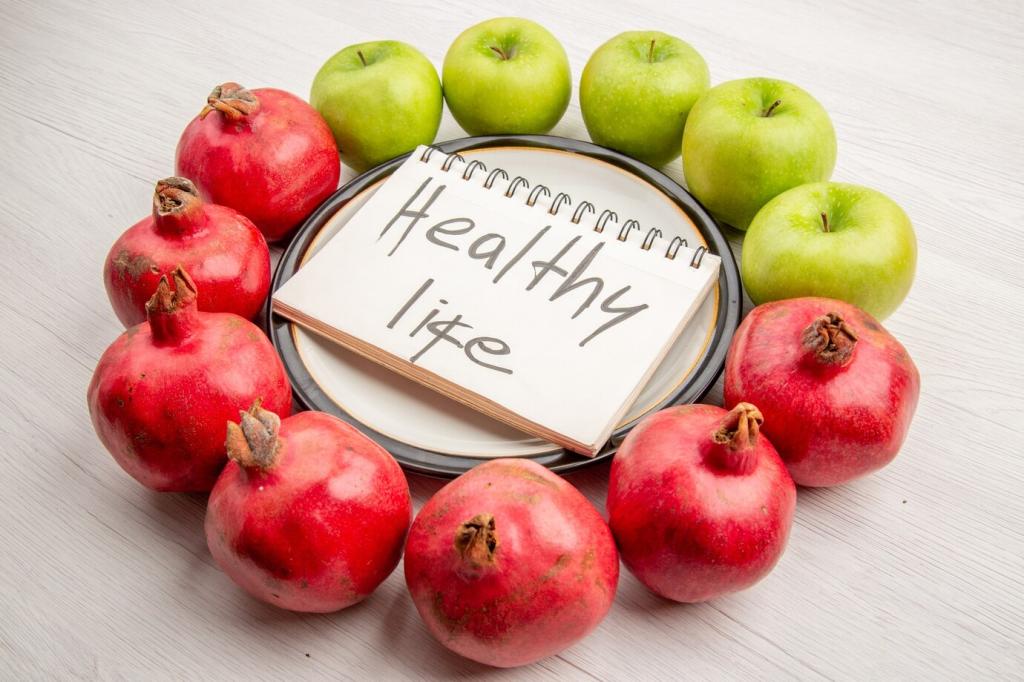
Fuel to Go the Distance: Nutrition Plans for Endurance Athletes
Selected theme: Nutrition Plans for Endurance Athletes. Welcome to a friendly, practical hub for runners, cyclists, triathletes, and trail lovers who want smarter fueling without the guesswork. We blend science, stories, and simple systems so your meals match your miles. Join the conversation, share your wins, and subscribe for weekly, athlete-tested guidance.
Understanding Energy Systems for Endurance Fueling
Carbohydrates are your quickest fuel for sustained efforts, powering tempo runs, hill repeats, and race surges. Most endurance athletes benefit from carbohydrate-rich meals around key sessions, then aim for 30–90 grams per hour during long efforts depending on intensity. Share your favorite mid-run carb source and tell us why it works.
Building Your Daily Plan Across Training Phases
During base training, emphasize balanced plates with colorful vegetables, whole grains, lean proteins, and healthy fats. Keep carbs steady to support volume while dialing fiber before longer runs to avoid distress. Consistent meals stabilize energy and mood. What base-phase breakfast keeps your long runs calm and powerful?
As intensity rises, your plan should elevate carbohydrates before and after key sessions while maintaining protein distribution. Carb periodization helps you nail intervals without excessive fatigue. Think pre-session oats or rice, and quick post-session carbs plus protein. Tell us how you tweak dinner on big workout weeks.
In the final days, focus on familiar, carb-forward meals that sit comfortably. Reduce heavy fiber, keep hydration steady with electrolytes, and avoid experimenting. Ben once added a new spicy sauce during taper and regretted it on race day. What simple, reliable meals anchor your taper week?

Pre-Workout and Race-Day Fueling Blueprint
Choose a carbohydrate-rich, low-fiber, moderate-protein meal such as rice with eggs and a banana, or a bagel with honey. Sip fluids steadily. This timing aids digestion and glycogen topping without bloating. Share your reliable pre-race meal and why it keeps your stomach settled mile after mile.
Pre-Workout and Race-Day Fueling Blueprint
Within sixty minutes, consider an easy snack like applesauce, a small rice cake with jam, or a simple sports drink. Some athletes time caffeine around forty-five minutes pre-start, always tested in training. What’s your last-hour ritual that settles nerves and sets up a confident first kilometer?
Pre-Workout and Race-Day Fueling Blueprint
For dawn races, prep portable options: overnight oats, soft rice bars, or drinkable carbs for sleepy stomachs. Liam once discovered that sipping half a smoothie in bed made getting calories down easier. Post your best half-asleep fueling hack so others can start steady, not stressed.
Fueling During Long Efforts
Carbohydrate Targets and Variety
For sessions beyond ninety minutes, many athletes start near 30–45 grams of carbs per hour and build toward 60–90 as tolerance allows. Mix sources—gels, chews, drink mixes—to reduce palate fatigue. Practice during long runs or rides, then report back which combo felt strongest late in the effort.
Fluids and Electrolytes in Sync
Match intake to conditions using sweat-rate estimates and electrolytes. Warmer days usually demand more fluid and sodium. Rather than chasing thirst reactively, sip proactively. Not sure where to start? Share your typical climate and we’ll discuss practical ranges and strategies other athletes have found dependable.
Real Food vs Gels: The Palate Balance
Real foods like soft rice cakes or dates can break monotony, while gels and mixes simplify logistics. During a 50K, Ana alternated gel, drink mix, and a small rice bite to keep tastebuds happy and energy steady. What real-food bite keeps you motivated when gels get tiresome?
Hydration Strategy Without Guesswork
Weigh yourself before and after a representative workout, tracking fluids consumed and restroom breaks. Each half kilogram lost roughly equals about half a liter of fluid. Repeat across temperatures to learn patterns. Share your findings, and we’ll help translate numbers into practical bottle plans for training and racing.
Sodium needs vary widely. Some athletes feel best with modest amounts, while salty sweaters require more to maintain performance and comfort. Cramping is multifactorial, not simply a salt issue. Tell us your sweat characteristics—salt stains, stinging eyes—and we’ll discuss evidence-based approaches to electrolyte planning.
Hot days push fluid and sodium higher; cold can suppress thirst despite ongoing losses; altitude increases ventilation and dehydration risk. Build flexible plans, not rigid rules. What environments do you train in most? Comment with your typical conditions and we’ll tailor guidance to keep you powerful and safe.


Recovery That Drives Adaptation
In the first hour post-training, many athletes benefit from 1.0–1.2 grams of carbs per kilogram plus 20–30 grams of protein, with electrolytes to replace sweat losses. Smoothies, yogurt bowls, or rice and salmon are easy wins. What recovery meal leaves you satisfied and ready for tomorrow?
Recovery That Drives Adaptation
Post-workout timing helps, but your daily total still matters most. Spread protein across meals, keep carbs aligned with training load, and include fruits and vegetables for micronutrients. Share how you organize your day of eating, and we’ll help refine it for busy schedules and big goals.
Training Your Gut for Race Day
Progressive Carbohydrate Tolerance
Start with 30 grams per hour on long sessions and gradually nudge upward weekly, practicing the exact gels and drinks planned for race day. Keep notes on comfort and energy. What incremental changes helped you move from minimal fueling to a strong, confident 60–90 grams per hour?
Fiber, FODMAPs, and Friendly Foods
Reduce high-fiber and unfamiliar foods in the 24–48 hours before racing, and avoid spicy experiments. Favor simple, well-tested carbs and familiar proteins. Comment with your low-fiber pre-race dinner so newcomers can build menus that are calm on the gut but strong on glycogen.
Practice in Real Conditions
Simulate race-day breakfasts, caffeine timing, and heat exposure in select long workouts. Nora learned her usual peanut butter sat heavy on hot days, so she swapped to rice and honey. What practice revelation reshaped your plan? Share it to help another athlete dodge a mid-race surprise.
Join our mailing list
